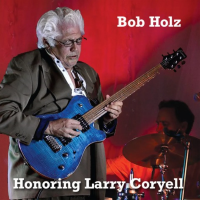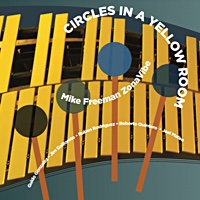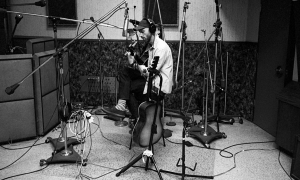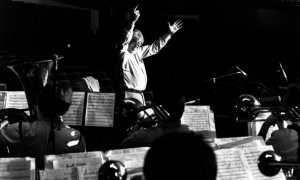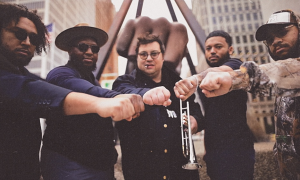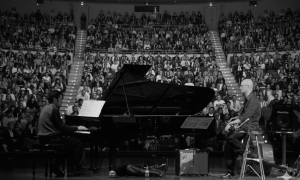I play the saxophone.
At one point in time I was a saxophonist.
For me there's an important distinction between the two. Saying that one plays the saxophone implies something rather casual; a hobby, a part time creative outlet. Being a saxophonist indicates a much higher level of dedication and professionalism. It's the difference between someone who plays pick-up basketball and someone pursuing a career in the NBA. This dichotomy is not limited to the conical brass brainchild of Adolphe Sax, and can easy be applied to any musical instrument.
Throughout college and for about a year after I counted myself as a saxophonist. Hours of practice, weekly lessons, and the participation in numerous ensembles all served as evidence to support my claim. I was focused on honing my skills and pursuing a career as a horn player. Somewhere along the way I became disillusioned—the lifestyle promised to be difficult, other interests (both musical and non) competed with my practice time, and of course the ever-nagging self-doubt. I gradually became less a saxophonist and more one who plays the sax.
Recently I felt the need to start practicing again, really practicing for multiple hours a day to try and get myself back to a high level. As you can imagine this provided me with challenges vastly different from picking up a new instrument. My hunch is that other musicians have had similar experiences and that there are many more out there considering a return to an instrument they put down. Because of this I thought it might be helpful to offer some tips based on what I have learned from my recent attempts to return to top form on the saxophone.
Don't Get Frustrated!
This sounds so obvious, but it's probably the most useful mantra I can think of when returning to an instrument. The reality is that you simply won't have the chops you once had. It's incredibly annoying to be unable to execute musical ideas you once were able to. Just take deep breaths and focus on the fact that getting back to your axe is a million times better than letting it sit in the case.
Start out with Familiar Material
Remember that one lick you used to play every time you grabbed your axe? Now's the time to play it! This will serve as a great confidence boost if you get it right, and if not you'll know from the get go where you stand as a player. There was a reason you played that all the time- You like it! It sounds good! This brings me to my next point...
Understand How Your Mind and Body Will React to the Instrument
The way I see it, all former players used to enjoy three separate levels of comfort with their instruments: mind, dexterity, and stamina. Being mindful of this breakdown can help you to figure out where problems stem from as you return to an instrument.
Stay tuned for part two, coming later this week.
At one point in time I was a saxophonist.
For me there's an important distinction between the two. Saying that one plays the saxophone implies something rather casual; a hobby, a part time creative outlet. Being a saxophonist indicates a much higher level of dedication and professionalism. It's the difference between someone who plays pick-up basketball and someone pursuing a career in the NBA. This dichotomy is not limited to the conical brass brainchild of Adolphe Sax, and can easy be applied to any musical instrument.
Throughout college and for about a year after I counted myself as a saxophonist. Hours of practice, weekly lessons, and the participation in numerous ensembles all served as evidence to support my claim. I was focused on honing my skills and pursuing a career as a horn player. Somewhere along the way I became disillusioned—the lifestyle promised to be difficult, other interests (both musical and non) competed with my practice time, and of course the ever-nagging self-doubt. I gradually became less a saxophonist and more one who plays the sax.
Recently I felt the need to start practicing again, really practicing for multiple hours a day to try and get myself back to a high level. As you can imagine this provided me with challenges vastly different from picking up a new instrument. My hunch is that other musicians have had similar experiences and that there are many more out there considering a return to an instrument they put down. Because of this I thought it might be helpful to offer some tips based on what I have learned from my recent attempts to return to top form on the saxophone.
Don't Get Frustrated!
This sounds so obvious, but it's probably the most useful mantra I can think of when returning to an instrument. The reality is that you simply won't have the chops you once had. It's incredibly annoying to be unable to execute musical ideas you once were able to. Just take deep breaths and focus on the fact that getting back to your axe is a million times better than letting it sit in the case.
Start out with Familiar Material
Remember that one lick you used to play every time you grabbed your axe? Now's the time to play it! This will serve as a great confidence boost if you get it right, and if not you'll know from the get go where you stand as a player. There was a reason you played that all the time- You like it! It sounds good! This brings me to my next point...
Understand How Your Mind and Body Will React to the Instrument
The way I see it, all former players used to enjoy three separate levels of comfort with their instruments: mind, dexterity, and stamina. Being mindful of this breakdown can help you to figure out where problems stem from as you return to an instrument.
- Mind—When returning to an instrument you've long been apart from, your mind will be leaps and bounds ahead of your dexterity and your stamina. Musical ideas from the past, along with new inspiration that results from revisiting something you love, will come at you rapidly. Sadly, you won't be able to play them all. Take some time to write them down and revisit them as you regain your skills. Another part of your musical mind is the ego you developed as a player through hours and hours of hard work. Don't let that ego get in the way and prevent you from doing the more rudimentary and humble work you'll need to do to redevelop your skills.
- Dexterity—This is how fast your fingers (and your mouth for wind players) do what they need to do on the instrument. It will take a while for this to fall back into place. All of the times you played a passage or an exercise incorrectly will come back to haunt you. For some reason, it takes a little while for the brain to send the right messages to the fingers. All the repetitions of etudes you did in the past will serve you well, but first you're bound to experience a number of glitches.
- Stamina - You need certain parts of your body to be in peak condition to play at a high level. When a wind player returns to their instrument after an extended period of time, for example, the mouth and throat muscles that make up a good embouchure will be flabby and weak. A guitarist will have lost the calluses on their fretting hand. Playing is going to hurt for a while. Fight through the pain and whip your body back into physical musical shape!
Stay tuned for part two, coming later this week.






